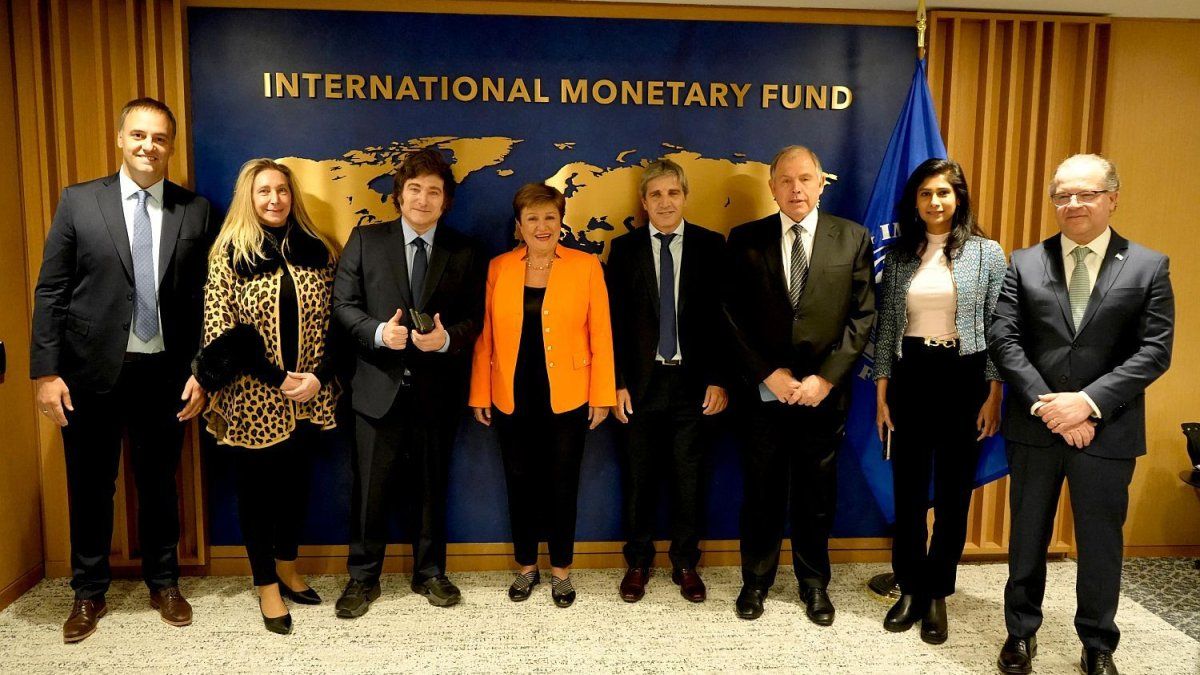Last Thursday, the FMI spokeswoman Julie Kozack, said in her usual press conference that the objective of the current program in our country “is to support the Argentine transition towards the next stage of stabilization and reforms.”
In this context, he pointed out that “the Milei administration policies continue to evolve and throw impressive results (…). Stability in the country remains supported by the implementation of a strong fiscal anchor.” All praise to spending cuts in sensitive areas, such as public works or retirement. If there is something that impresses is the lack of sensitivity.
However, the fund says nothing that the positive result of public accounts is also being achieved by “creative accounting.” As I have been commenting lately, through the placement of debt in capitalizable pesos it is achieved that interests do not pass by the treasure results. It has already happened in 2024, when the product of the tenders of this debt (made between April and December), hidden “about 14 billion pesos of interest. A correct registration would have brought public accounts to the field of deficit.
A fact to keep in mind is that just in four months the “hidden” figure in 2024 has already been overcome (reaching 17.3 billion pesos) and that will be further swell in the light of the last ads, which contemplate the issuance of large amounts of debt of this type.
In exchange matters, the difficulties with the fulfillment of the program with the IMF in regards to the goal of accumulation of reserves, has generated the postponement for a few weeks of the review that the background should be doing these days (June 13), giving some more term to the Government to approach the objectives set.
Without wasting time, the Argentine authorities announced the deepening of the dollar indebtedness phase. Kozack, greeted “the return of the treasure to capital markets and other actions to mobilize financing for Argentina”, with the expectation of strengthening reserves.
Last week a Repo operation was carried out with a set of first -line international banks for 2,000 million dollars, with amortization at the expiration in April 2027, with a cost equivalent to a fixed rate of 8.25% per year.
Hard currency indebtedness constitutes a dangerous strategy, even more so if in parallel, and as has happened, restrictions for currency exit are eliminated. This repeats the policies carried out by the macro management.
In April, according to data from the BCRA exchange balance, the formation of external assets of human persons amounted to 2,247 million dollars, a reflection of the impact of liberalization measures compared to the dollar, implemented in the middle of that month. To compare, throughout March the item had accounted for only 47 million dollars.
In addition, public titles began to be issued in pesos, with dollars. It was made for the first time on May 28, when awarding 1,000 million dollars of the 2030 exclusive for foreign investors (for the first time after seven years), and the broadcast was expanded last Friday at 500 million dollars, also enabling the participation of residents. To encourage investment by non -residents, permanence deadlines will be eliminated for those who invest through the market -free market, or primary treasure tenders with instruments that have maturities greater than six months. An incentive for Capitals to swallow, which are already the ones that first leave, when the conditions change.
It should be stressed that the taking of debt in dollars is functional to the government’s strategy to maintain an exchange rate (overvalued) that collaborates to continue lowering inflation rates. In May, retail inflation was 1.5% monthly, according to the national CPI published by INDEC. The government celebrated the data, although it would be desirable for inflation to reduce the country without financially compromising, and without affecting economic activity, consumption and local employment.
Minister Luis Caputo commented on the streaming program of the Ministry of Economy, referring to the different strategies to accumulate currencies: “There is also the option that is not spoken, but in which we are working, which is that there will be sales of assets for billions of dollars. We will sell many of the assets of the State Assets Administration Agency (AABE), there will be tenders of the hydroelectric plants, there will be privatizations.”
In short, a model that contains indebtedness, privatizations and capital escape, typical features of neoliberal experiments, which historically harmed the majority of the population and always badly ended up.
National Deputy Union for the Homeland. President Solidarity Party
Source: Ambito
David William is a talented author who has made a name for himself in the world of writing. He is a professional author who writes on a wide range of topics, from general interest to opinion news. David is currently working as a writer at 24 hours worlds where he brings his unique perspective and in-depth research to his articles, making them both informative and engaging.




